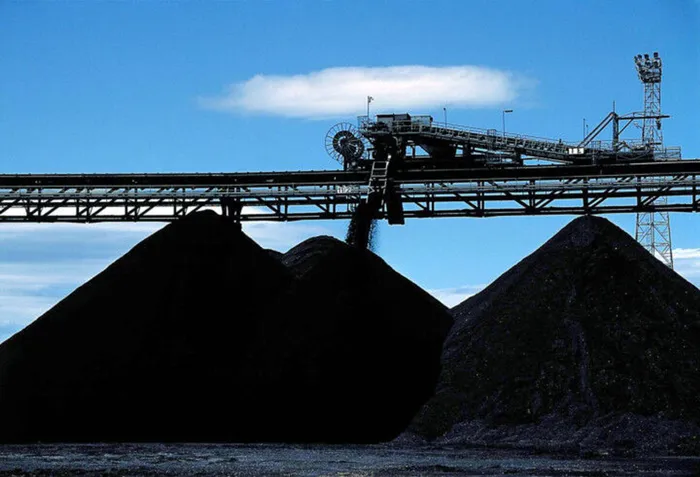Thungela maintains financial strength despite 80% drop in interim profits
MINING

Thungela’s full year guidance for export saleable production of 12.8 million tons to 13.6 million tons “remains appropriate as production is seasonally weighted towards the second half” of the year.
Image: File photo
Tawanda Karombo
Thungela Resources remains in a strong financial position despite an 80% plunge in interim profits for the period to end June, with its stronger balance helping it to continue with strategic investments after paying a R2 per share half-year dividend.
Shares in Thungela were 2.74% weaker at R88.17 in afternoon trade on the JSE on Monday, extending the stock’s 6% and 5% fall in the past seven and 30 days, respectively.
Headline earnings per share (HEPS) for the half-year period to June 30 fell by 80% to 192 cents on the back of lower coal prices on global markets, although its strong balance sheet brightened up future prospects.
“Despite challenging markets, Thungela’s balance sheet is strong,” said Greg Davies, head of wealth at Cratos Capital.
Thungela has net cash holdings of R6.3 billion, which will help the company by “ensuring financial resilience” in spite of the 12% plunge in interim revenues to R14.8bn.
More importantly, Thungela is set to “continue (with) strategic investments” such as the Zibulo North Shaft and Elder, which are “on track” and crucial “for long-term sustainability as some mines approach closure,” said Davies.
Cash flows from operating activities for the half year amounted to R1.2bn. After investing R703 million in sustaining capital expenditure, the company closed the period in an adjusted operating free cash flow position of R484m.
“Our robust balance sheet position enables us to execute on our core strategic priorities. We continue to reserve R500m to complete the Zibulo North Shaft project and a further R300 million to complete the Lephalale Coal Bed Methane project,” said Thungela CEO, July Ndlovu.
Despite the HEPS and revenue plunge for the period under review, Thungela is in addition to declaring the R2 interim dividend undertaking a share buyback of up to R140m subject to favourable market conditions.
Ndlovu said it was “appropriate” for the company to maintain “a cash buffer” of R5bn given the weak coal prices, US dollar weakness and supply chain risks emanating from ongoing trade and tariff uncertainties.
Thungela also has undrawn credit facilities of R3.2bn.
Global trade and tariff uncertainties currently pervading world markets have occasioned weak demand in key coal demand regions. This has translated to softer prices, a situation reminiscent of the Covid-19 pandemic.
Thungela’s financial performance for the half-year under review thus reflect the continued pressure on coal prices, with the average realised export prices in South Africa and Australia declined by 11% and 10%, respectively, during this period.
The company blamed the softer coal prices as well as a weaker US dollar to South African rand exchange rate, for the revenue plunge.
In South Africa, Thungela’s export saleable production, however, increased by approximately 300 000 tons to 6.4 million tons mainly due to productivity gains at Zibulo and Mafube.
Production at Khwezela was impacted by abnormally high rainfall in the period.
The free on board (FOB) cost per export tonne excluding royalties for the period of R1 258 was in line with Thungela’s guidance range.
Its full year guidance for export saleable production of 12.8 million tons to 13.6 million tons “remains appropriate as production is seasonally weighted towards the second half” of the year.
Consequently, Thungela deems its guidance for FOB cost per export tonne excluding royalties of R1 210 to R1 290 as appropriate.
Positively though for Thungela, the South African coal industry continues to benefit from the improved rail performance.
It said over the first half of the year, Transnet Freight Rail achieved an annualised run rate of 54.3 million tons compared to 51.9 million tons in the same period a year ago.
“The improved rail performance stems from the ongoing industry collaborative initiatives as well as further optimisation projects, such as the signalling project, which are expected to improve rail performance going forward,” noted Ndlovu.
BUSINESS REPORT